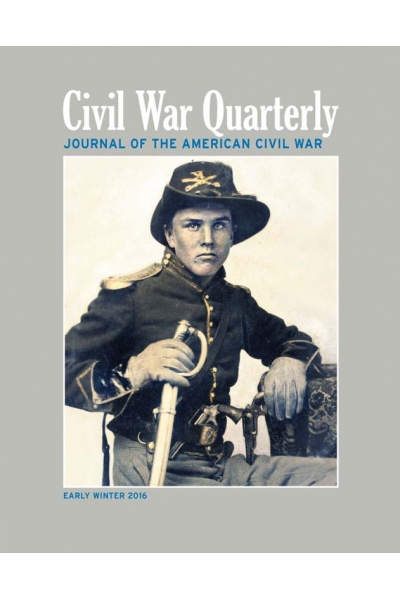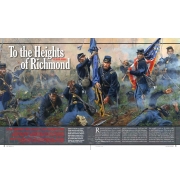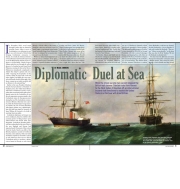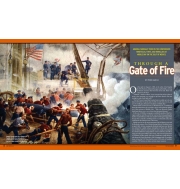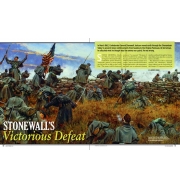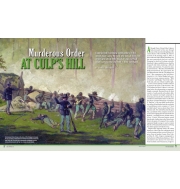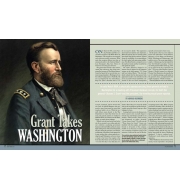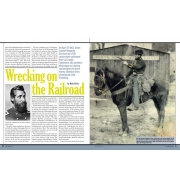Civil War Quarterly - Early Winter 2015 (Hard Cover)
Grant Takes Washington
In early March 1864, a physically unprepossessing Union general arrived in Washington for a meeting with President Abraham Lincoln. For both the general—Ulysses S. Grant—and the president, the meeting would proved epochal. By Arnold Blumberg
In late September 1864, Ulysses S. Grant mounted his fifth offensive against Confederate forces at Petersburg, Virginia. Maj. Gen. Benjamin Butler led a two-pronged assault on either end of the Confederate line. The main targets were Fort Harrison and Chaffin’s Bluff. By David Norris
Diplomatic Duel at Sea
When the Union warship San Jacinto stopped the British mail steamer Trent en route from Havana to the West Indies, it touched off an international incident that threatened to involve the United States in a third war with Great Britain. By Mark Simmons
Murderous Order at Culp’s Hill
Experienced regimental commanders in the woods near Culp’s Hill took one look at their new orders and shook their heads. It was a virtual death sentence for the men in their command. By Joshua Shepherd
Final Attack at Stones River
Bragg stopped him. “Sir, my information is different. I have given the order to attack the enemy in your front and expect it to be obeyed.” By Jim Heenehan
Through a Gate of Fire
Admiral Farragut took on the Confederate minefields, forts, and ironclads at Mobile Bay on the Gulf of Mexico. By Pedro Garcia
“I Am Dying, Egypt, Dying”: Poet-General William H. Lytle
A rising star in the Union Army, Brig. Gen. William Haines Lytle was popular with both his superiors and enlisted men. Many felt he was destined for the White House. One morning at Chickamauga would change all that. By Roy Morris Jr.
Wrecking on the Railroad
On April 17, 1863, Union Colonel Benjamin Grierson led 1,700 cavalrymen southward from La Grange, Tennessee, into northern Mississippi on a daring raid designed to divert enemy attention from strategically vital Vicksburg. By Mike Phifer
Stonewall’s Victorious Defeat
In March 1862, Confederate General Stonewall Jackson moved north through the Shenandoah Valley to prevent Union reinforcements from heading to the Virginia Peninsula. At Kernstown, he attacked what he thought was the enemy rear guard. He was wrong. By Lawrence Weber
Editorial
Always a cool head in a tight spot, Colonel Benjamin Grierson found a way to help General William T. Sherman hold onto his.
Intelligence
The Confederate provost guard functioned as a combination rear guard and prison keeper during the Civil War.
Your Review: Note: HTML is not translated!
Rating: Bad Good
Enter the code in the box below:

 Bestsellers
Bestsellers









 Our Featured
Our Featured